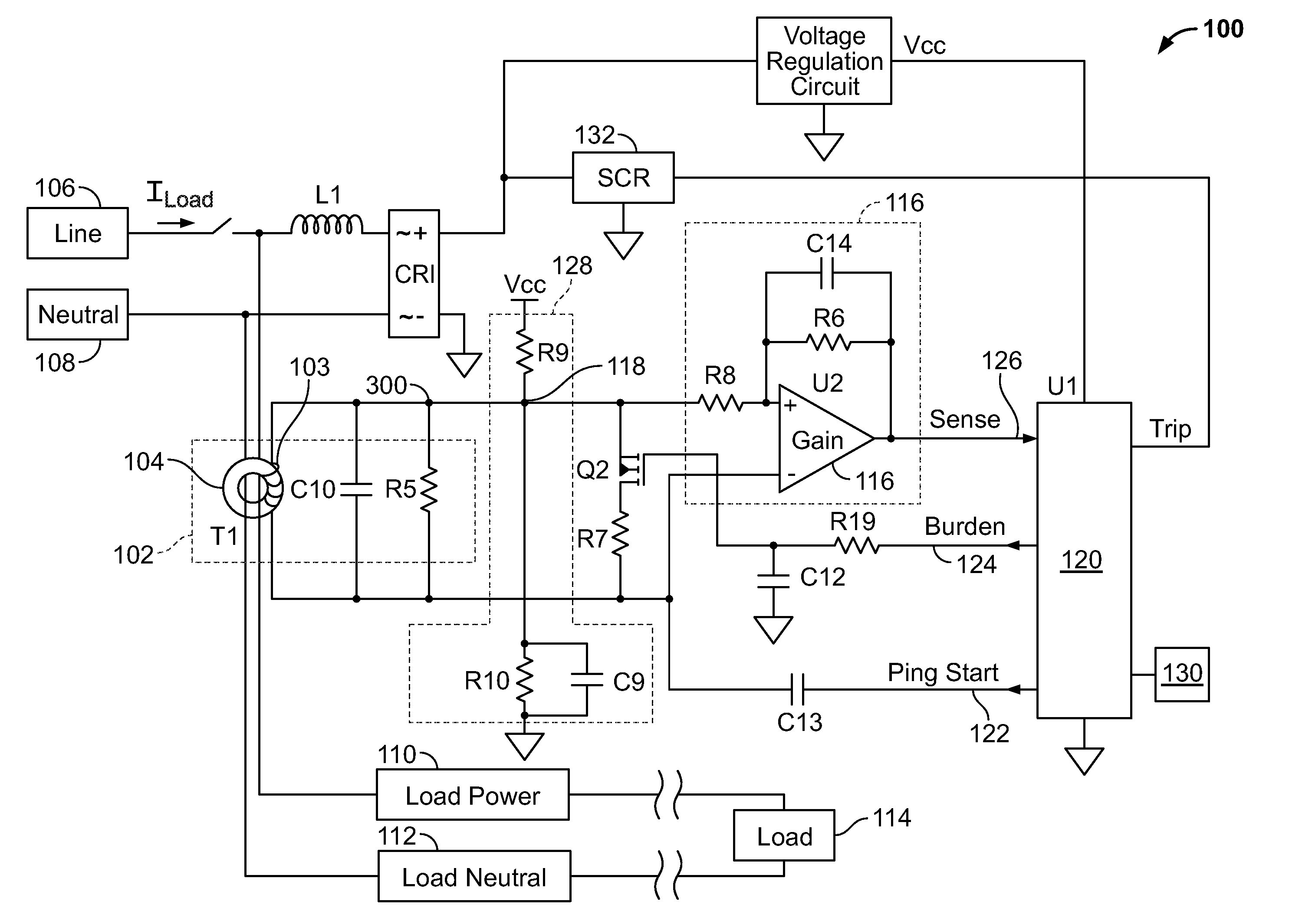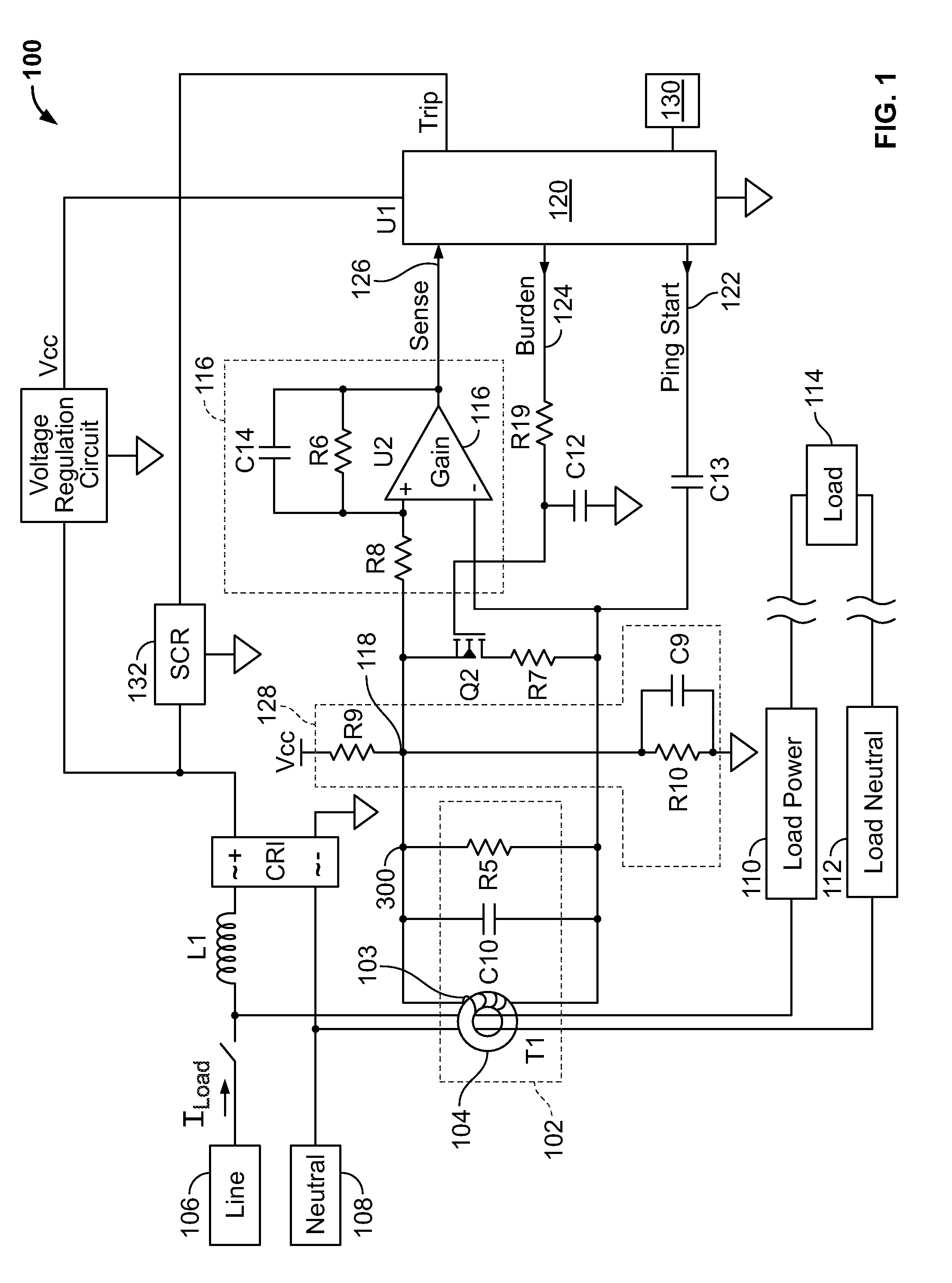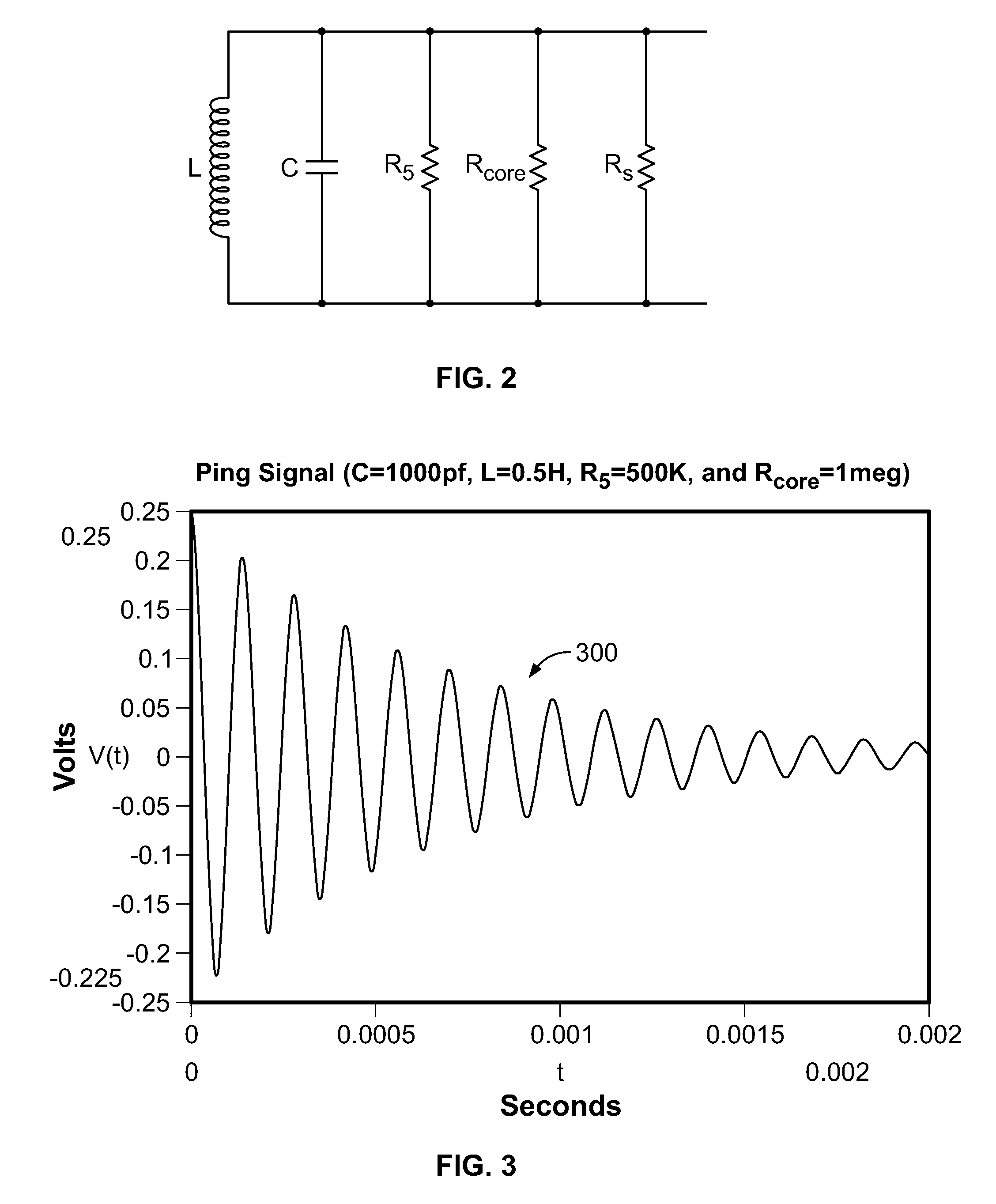Apparatus and method for measuring load current using a ground fault sensing transformer
a load current technology, applied in the field of current sensors, can solve the problems of non-uniform magnetic field intensity and localized flux densities of ferrite cores and achieve the effect of reducing the number of ground fault sensing transformers
- Summary
- Abstract
- Description
- Claims
- Application Information
AI Technical Summary
Benefits of technology
Problems solved by technology
Method used
Image
Examples
Embodiment Construction
[0017]FIG. 1 illustrates a functional block diagram of a load-current detection circuit 100 that includes a resonant circuit 102 operatively coupled to a microcontroller 120. The resonant circuit 102 forms a parallel RLC circuit having resistive, inductive, and capacitive components, as modeled in FIG. 2. The capacitive component is supplied by the total parallel capacitance in the circuit 100, including C10, and the inductive component represents the inductance associated with a ground fault sensing transformer 104 having a conventional primary loop comprising a toroid ferrite core and a secondary winding 103. At least two non-concentric load conductors (line and neutral) 106, 108 pass through the central opening of the sensing transformer 104 (see FIG. 5). The resistive component of the resonant circuit 102 includes a known resistance of a resistor R5, connected in parallel with the capacitor C10, a resistive loss associated with the ferrite core of the sensing transformer 104, re...
PUM
 Login to View More
Login to View More Abstract
Description
Claims
Application Information
 Login to View More
Login to View More - R&D
- Intellectual Property
- Life Sciences
- Materials
- Tech Scout
- Unparalleled Data Quality
- Higher Quality Content
- 60% Fewer Hallucinations
Browse by: Latest US Patents, China's latest patents, Technical Efficacy Thesaurus, Application Domain, Technology Topic, Popular Technical Reports.
© 2025 PatSnap. All rights reserved.Legal|Privacy policy|Modern Slavery Act Transparency Statement|Sitemap|About US| Contact US: help@patsnap.com



